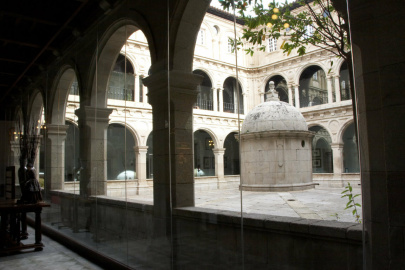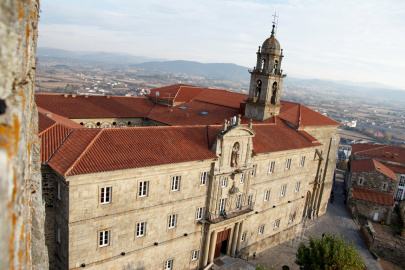

San Vicente do Pino Monastery
Above the plain of Monforte de Lemos rises a small hill which overlooks its entire expanse. This was the site chosen in the 10th century for building what would subsequently become the current monastery. It is also said that this was the location for the well-known Castrum Dactonium, of the Celtic Lemavos tribe, mentioned by the historians Ptolemy and Pliny the Elder.
Construction of the current San Vicente del Pino monastery dates back to the 16th century, although there are references to it originating in the 10th century. At the time of its construction, it was part of the Congregation of Valladolid. It is neoclassical in style and has three levels, the most prominent feature on the façade being the Doric columns.
Inside the monastery we can find a courtyard which, through the use of channels and its gradient, was designed to collect rainwater for storage in an underground cistern to supply the entire complex with water. During the confiscation period, the monastery was abandoned and at the turn of the 20th century it was once again inhabited by monks from Samos monastery, only to be subsequently abandoned again in the nineteen eighties. It would later be transformed into a National Tourism Parador hotel.
The church boasts a renaissance-style façade with a transitional Gothic interior. Inside, we can find elaborate vaults and a Baroque organ, currently out of service. The high altar is also Baroque.
Don't miss!
Monforte is an excellent starting point for discovering many of the Ribeira Sacra's secrets, and we recommend visiting the interactive map on our website to locate the principal points of interest that you can visit.
Monasterio de San Vicente do Pino
Information and contact

Plaza Luis de Góngora y Argote
Monforte de Lemos
27400 Lugo

 Directions
Directions 






 What would you improve?
What would you improve?